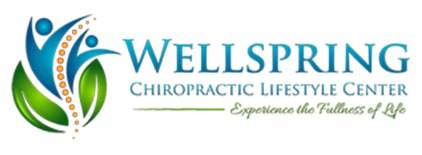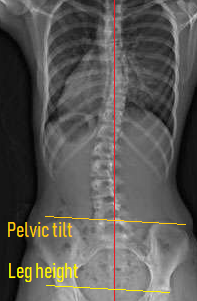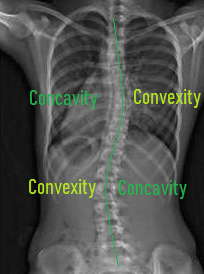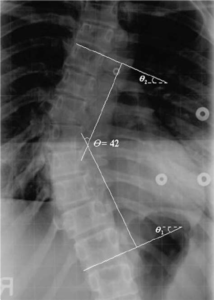Scoliosis Care: A Shelburne Chiropractor’s Perspective

Are you looking for the best chiropractor in Shelburne that cares for scoliosis? A healthy spine is one that when looking from the back is straight and strong. Like a drinking straw with a kink in it, a sideways or lateral curve in the spine is the weakest area that will have trouble bearing the brunt of gravity over time. Scoliosis is the lateral curvature (side bending) that occurs in the thoracic and/or lumbar spine. It is the most common spinal deformity, with females being more likely to suffer from progressive scoliosis. Although 3% of the US population has scoliosis, 90% are not severe enough to require surgery. According to the American Academy of Neurological Surgeons, 80% of cases are idiopathic, meaning they have no identifiable cause.
How do you know if you have scoliosis in Shelburne?
An x-ray is the best diagnostic tool, but there can be indications that show up when observing someone’s posture. If you look closely at someone’s posture, even your own by looking in the mirror or in a photo of yourself from behind, these are the indicators:
- Head tilt
- Uneven shoulders
- Uneven hips
- Uneven ribs
- Asymmetrical abdominals
- Uneven muscle bulk
- Uneven arm gap
- Winged scapula
- Rotated torso
- Rib hump
- Compressed ribs
- Leg length discrepancy
Additionally, when bending forward at the waist with a rounded spine, can an asymmetry or imbalance be seen where one side is higher than the other? This is the most definitive postural assessment to identify scoliosis.
Scoliosis may develop if you are born with misshapen vertebrae that are wedge-shaped instead of square, or if you have a traumatic injury where you collapse a vertebral body changing its shape. With either of these situations, you cannot expect or would want to have a straight spine, the same way a stack of square blocks would make a tower, but just one wedge-shaped block in that stack would make it impossible to have a straight tower. These situations are much less common than idiopathic scoliosis which develops with square vertebrae that twist and rotate out of alignment causing a sideways curve where it should be straight. Any combination of jarring the spine, coupled with bad habits and poor posture can initiate and perpetuate the most common abnormal curves known as idiopathic scoliosis.
Neurologically, the brain uses a sense called proprioception or knowing where the body is in space, to keep everything moving right. If the brain gets vague or distorted proprioceptive messages, then the altered signaling can lead to a loss of proper alignment that perpetuates scoliotic curves in the spine. Bones are part of what is known as the Passive Sub-System of the spine, meaning they can’t move. Muscles attached to the bones are what move the bones, so the muscles are part of the Active Sub-System of the spine. Muscles are controlled by nerves so the nervous system is the Controlling Sub-System of the spine. Idiopathic scoliosis is more than just bones out of alignment. It is the result of all three subsystems losing specificity where the nervous system has lost accurate perception and is controlling the muscles in an imbalanced way that keeps the boney structure in an asymmetrical pattern with sideways curves.
Usually, idiopathic scoliosis is first detected in the teenage years when growth spurts occur. However, 3-10 years old is the time when the best long-term results can be achieved. Unfortunately, this is when conventional doctors tell parents to “watch and wait”. This however would be the ideal time to work to stop the progression and reduce it to prevent future poor outcomes or invasive procedures. There is a window of time before the bone’s growth centers close when correction is most effective, in females, this is before menarche when the menstrual periods begin. In males, it occurs around 18 years of age. If scoliosis is going to worsen, the teenage years are when it will happen the fastest. After that, correction may begin to be limited if the bones start to change their shape over time. If this situation persists, there can be abnormal wear and tear due to the abnormal curvature, just like if the front end of your car is out of alignment, it will cause the tires to wear out much faster and asymmetrically.
Adults tend to discover their scoliosis due to pain with the conventional approach being pain medications, but reductions in curvatures, as well as pain, are possible with natural approaches like those used in our clinic, preventing the need for invasive measures. Over time if left uncorrected, idiopathic scoliosis can become degenerative causing the shape of the vertebrae to change so the blocks are no longer square. After 60 years old, degenerative changes can accelerate, leading to worsening of scoliosis, along with pain and limitations. Surgery may impose more limitations. Working with the elderly to achieve a more functional spine can protect their quality of life and ability to perform activities of daily living. Early detection and correction is the best strategy.
How We Address Scoliosis in Shelburne
Over 35 years we have helped more than 10K people get their health back and folks concerned with scoliosis have been among them. When we find someone has scoliosis, our goal is to not only help their body reduce scoliosis, but also prevent any further progression, improve function and reduce pain, and provide long-term stabilization.
Identifying the cause is the first step to understanding if we can help. We conduct a thorough consultation where we really listen to what your concerns are, what you have noticed, what you think might be going on and then we become detectives where we uncover all the factors that have accumulated over time to land you where you are right now. Scoliosis often runs in families. There may be learned family postural patterns that are perpetuated. Genetic variants passed down in families have also been found linked to scoliosis.
Next, we will get our hands on your spine with a comprehensive functional, orthopedic, and neurological exam and your body will tell us some things, and combined, these will help us determine which additional tests we need to run to get the full picture of what’s going on. We will palpate each individual vertebra to assess its alignment and the curves in the spine as well as to conduct a detailed functional leg length analysis. If you twist a washcloth at both ends, where does all the water come out? In the middle. To take the twist out of the washcloth, you probably wouldn’t try to pick it apart from the middle, but instead would untwist it from one end or the other or both. We will assess whether you have scoliotic patterns originating from one end of your spine or the other or both.
There are seven tools we may use to fully understand what is going on and if we can help.
- We will use brain-based testing to see if you have distorted brain patterns that need to be addressed if they are a factor that is driving scoliosis.
- We may use surface electromyography (sEMG) to identify imbalanced muscle patterns and dysponesis. Dysponesis is a reversible pathophysiologic state where neurophysiologic reactions consist of covert errors in energy expenditure. Essentially it is describing dis-ease and inappropriate and inefficient adaptation to the stresses one is encountering. These errors can drive the hypotonicity on one side and at the same time drive the hypertonicity on the opposite side, setting up a persistent scoliotic pattern.
- Rolling Thermography (RT) can be used to identify how the scoliosis may be affecting the nerve supply to the organs and dysautonomia, a state of dysregulation of the nerves that control your organs.
- Heart Rate Variability (HRV) identifies specific stress patterns that are perpetuating the problem.
- Digital Range of Motion (ROM) is used to highlight which areas have fixations and dyskinesia, an abnormality in performing voluntary muscle movements.
- Digital Posture Analysis is used to identify altered proprioception, the inability to sense the precise position, location, orientation and movement of the body and its parts.
- Digital X-rays: X-rays are invaluable to see inside and to rule out congenital or traumatic scoliosis from idiopathic and to assess if any degenerative conditions have begun. We can refer you to a local facility to obtain the views needed.
From an x-ray we can measure what is known as the Cobb angle:
-
- <10 degrees: minor
- 10-20 degrees: Moderate
- 20-40 degrees: Moderate/severe
- >45 degrees: Severe
Some other factors may also be used to complete the picture, such as genetic test results, nutritional assessments, postural habits, and functional biomechanics analysis.
Specific Chiropractic Care | Shelburne
If the bones of the spine are jarred out of alignment or normal movement from injuries or bad habits like poor posture, too much time spent at computers, tablets, cell phones or other devices, or even just stressed posture, it causes soft tissue damage, leading to inflammation. This is called a vertebral subluxation. This then irritates the delicate nerves which exit the spine. When irritated, your smart body will spasm the muscles around that joint to strap it down to protect it from further harm. It may not sound like it, but a muscle spasm is actually the body trying to protect itself. Really! This lack of movement then causes the discs to deteriorate over time, initiating the process of degeneration as the joints get rusty like an unused door hinge. This is known as osteoarthritis, or degenerative joint disease, which occurs from old traumas or ongoing postural stresses. That’s why it’s important to get regular spinal checkups so we can give it the attention it needs to be fully functional and prevent problems in the future.
Chiropractic care at Wellspring Chiropractic Lifestyle Center in Shelburne focuses on identifying and correcting vertebral subluxations, without drugs or surgery, restoring healthy normal spinal function and preventing degenerative disc disease in the spine. When the brain gets accurate proprioceptive messages telling it exactly where the body is in space, it has the best chance of controlling the muscles that move the bones so they can be moved into proper alignment to reduce and even eliminate scoliosis. Correcting spinal subluxations clears the distorted messaging to the brain and updates it to a more accurate neural self-image. Idiopathic scoliosis is a classic example of a distorted neural self-image. If you want a healthy body, you need a healthy nervous system, and if you want a healthy nervous system, you need a healthy spine. Who checks your spine?
If there are congenital, traumatic, or degenerative-based scoliotic factors, then time and gravity are not on your side. Getting as much correction as possible is the first step. After that, maintaining that alignment is key to reducing the chances of advancing degenerative changes. Could you ever exercise and get so fit that you would never have to exercise again? Once your spine is as healthy as it can get, it will be important to continue to take care of it so you don’t lose the ground you have covered and the gains you have made. Without proper spinal care, a persistent unnatural position of the spine can lead to muscle strain and pain in the back, neck, shoulders, and hips.
Custom Therapeutic Exercise Plan
We will customize a plan for you based on your functional assessment. This will include showing you the proper ways to move and rest to optimize healthy spinal alignment. You will be trained in specific strengthening exercises to support a straighter spine and you will learn the best practices for you to stay active without increasing your scoliosis symptoms.
Our three-legged stool model will help you in the office but also develop a plan for you at home with your individualized spinal exercises and the best practices for changing bad habits into healthy lifestyle habits to prevent problems in the future so you have the best life possible.
Whole Body Vibration and Scoliosis Correction | Shelburne
One of the problems with scoliosis is that there is an asymmetry in the tone of the muscles of the spine so that one side of an area of the spine has muscles that are too tight or hypertonic and the other side has muscles that have a poor tone or are hypotonic. The brain has set an abnormal pattern where it is defaulting to this imbalance as if it is normal and therefore does not correct it. This causes the tight side to be pulling more than the weak side and it causes a misalignment of a section of the spine with rotation, twisting, and tilting of the vertebrae the way a guidewire on a tent pole will cause it to lean if it is imbalanced. If this persists it can cause a change in the gravitational stress on the bones so they can start to weaken where they should be strong which over time can lead to increased wear and tear, degenerative changes, and misshaped vertebrae which can cause scoliosis to worsen.
Research shows that adding whole-body vibration was shown to increase the bone mineral density of adolescent idiopathic scoliotic patients. This minimizes the risk of vertebrae altering their shape over time from collapse from weakened bone density.
By adding an additional vibratory stress to simple gravity, it causes muscles to contract against vibration 1000 times per minute which accelerates the strengthening of the weaker toned muscles while performing specific exercises on the vibe plate. It also stresses the bone and promotes bone strengthening. The added vibration also increases mechanoreceptor activity which sends more signaling to the brain to increase its perception of the area so it can course correct to bring greater symmetry and balance.
Vibe Plates work to accelerate your progress in correcting your scoliosis. Chiropractic adjustments correct subluxations that interfere with clear messaging between the brain and the body. Doing spinal exercises helps to strengthen the spine. Adding whole-body vibration accelerates the benefits of the exercises to get faster and longer-lasting results. Improving the tone of the muscles through whole-body vibration and exercises helps you hold your adjustments longer. Adjustments and whole-body vibration give you more value from the spinal exercises.
The vibe plate combined with the exercises opens up a joint and disc spaces to make adjustments easier and reduce in curvature possible.
Kinesiotaping and Scoliosis | Shelburne
Muscle imbalances lead to some muscles being too tight and uncomfortable and others being too weak and unsupportive. Kinesiotaping can help proprioceptively through neuromuscular re-education to remind you to work at balancing your posture, bringing more tone/strength to the weak side and more ease to the tight side. Balancing muscle tone can make corrective exercise more effective for posture. Ongoing care with neuromuscular re-education such as kinesiotaping along with whole body vibration shows the quickest responses to chiropractic care for scoliosis and can allow for improved functionality in everyday life.
Complications from Scoliosis
Distortion in the structure of the spine and ribs can create unhealthy pressure on internal organs resulting in an increase in heart and lung problems in folks who have scoliosis.
Without proper spinal care, a persistent unnatural position of the spine can lead to muscle strain and pain in the back, neck, shoulders, and hips. Untreated scoliosis in adults can lead to accelerated wear and tear of the spine leading to early osteoporosis, osteoarthritis, and degenerative discs.
And of course, there is aesthetics – Let’s be honest. Who wants to have a crooked spine?
Some scoliosis is severe enough to make the person very self-conscious about the hump on their back. My mother had severe scoliosis that as a child I never noticed until one day a neighborhood pal asked me what was wrong with my mother’s back. I went home and was shocked to see the hump on her back! After my father became a chiropractor, my mother’s spine improved and she ended up becoming a chiropractor herself at 52 years old and practiced up until the day she died at 85 years old, never letting her scoliosis hold her back from a full and active life.
Benefits of Chiropractic Care for Scoliosis in Shelburne
Research shows the following benefits of chiropractic care:
- Reduced pain and discomfort
- Reduced inflammation
- Improved spinal alignment and symmetry
- Improved range of motion
- Improved flexibility
- Increased activity and improved lifestyle
- Improved joint and nervous system function
- Decreased strain on muscles.
Unlike the invasiveness of surgery and the addictiveness of opioids, chiropractic care is non-invasive and non-habit forming. Compared to the costs of surgery, ongoing prescription medications and the treatment of their side effects, not to mention the increased costs in overall health care for a degenerating spine, chiropractic care is extremely cost-effective.
Frequently Asked Questions
Can a chiropractor in Shelburne straighten your spine?
At Wellspring Chiropractic Lifestyle Center, using time-tested safe, gentle approaches, we have helped improve the spinal neural integrity of many members of the Shelburne community including many who are looking to address scoliosis in their spine and correct imbalances in their posture. By aligning the spine and clearing the nerve interference that allows for balanced muscle function that supports a more symmetrical structural alignment, chiropractic care is one of the most effective ways to correct scoliosis.
Can you straighten scoliosis naturally without surgery?
Yes, to avoid surgery and chronic use of medication to manage spinal curvature problems, people have had great success with natural approaches like chiropractic care, spinal exercises and improving posture habits. Chiropractic care, along with adjunctive procedures like whole body vibration, kinesiotaping, and specific spinal exercises are some of the most effective ways to correct scoliosis without surgery.
What does scoliosis pain feel like?
Many people can have scoliosis with no pain at all and do not realize they have it which is why a thorough chiropractic exam is so important. Others will feel fatigue and achiness and some feel sharp pains at time that can shoot through the spine. Some scoliosis stress can trigger headaches as well.
What problems can scoliosis cause?
Scoliosis can lead to back, neck, shoulder and hip pain. Untreated scoliosis in adults can lead to accelerated wear and tear of the spine leading to early osteoarthritis and degenerative discs. Heart and lung function compromise can also occur if the abnormal rib and spinal structure put too much pressure on the organs.
How can you tell that a person has scoliosis?
Although not always visible to the eye, many times upon close observation one can see a pronounced hump on one side of the spine when rounding forward. Imbalances in shoulder and hips where one side is higher than the other as well as imbalances in the scapula are other indicators. Also watch for head tilt, uneven ribs, asymmetrical abdominals, uneven muscle bulk, uneven arm gap, rotated torso, rib hump, compressed ribs and leg length discrepancy.
Key Words: Abnormal sideways curve, Abnormal spinal curvature, Adam’s Test, adolescent idiopathic scoliosis, bone mineral density, BMD, brain-based chiropractic, brain-based testing, chiropractic adjustment, chiropractic care, congenital scoliosis, digital ROM, digital posture analysis, digital x-rays, dysautonomia, dyskinesia, dysponesis, functional exam, functional leg length analysis, Heart Rate Variability, HRV, hump back, hunchback, hypertonicity, hypotonicity, idiopathic scoliosis, kinesiotape, neural self-image, neurological exam, neuromuscular re-education, opioids, orthopedic exam, osteoarthritis, osteopenia, osteoporosis, palpation, posture, postural analysis, progressive scoliosis, proprioception, range of motion, ROM, Rolling Thermography, RT, scapular flaring, scoliosis, scoliosis correction, scoliotic, sEMG, spinal exercises, spinal neural integrity, subluxation, surface Electromyography, therapeutic exercise, traumatic scoliosis, vertebra, vertebrae, vertebral subluxation, vibe plate, wedge-shaped vertebrae, whole body vibration, x-ray
OFFICE HOURS
Monday
2:00pm - 6:00pm
Tuesday
7:00am - 12:20pm
Wednesday
2:00pm - 6:00pm
Thursday
7:00am - 12:30pm
3:00pm - 6:00pm
Friday
Closed
Saturday
Closed
Wellspring Chiropractic Lifestyle Center
4076 Shelburne Road #5
Shelburne, VT 05482
(802) 985-9850





